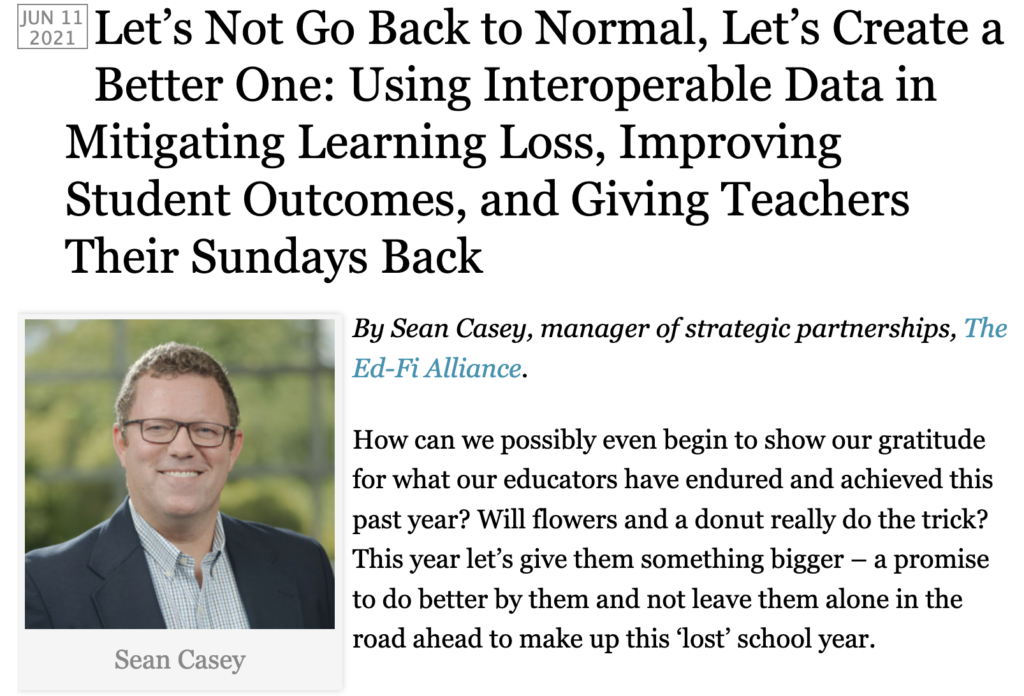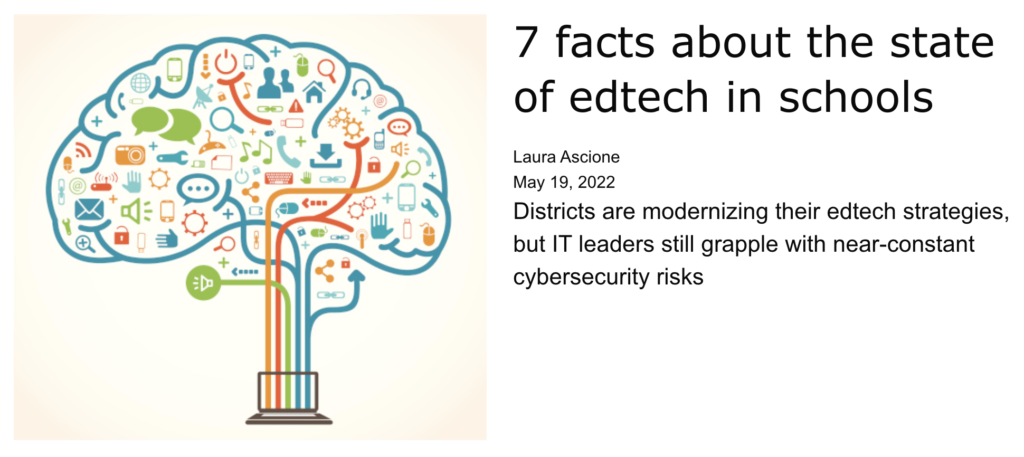Perhaps no industry has experienced as much change and tumult over the past two years as education and education technology. The pandemic’s impact spread far and wide as in-person learning ground to a halt and moved online, for schools to eventually reopen and work to address the lasting effects of COVID. For a bit of perspective on these impacts, UChicago found that learning loss due to COVID school closures are likely to lead to a reduction in global economic growth equivalent to an annual rate of 0.8%.
As ed tech PR and communications professionals, our role is to analyze these seismic shifts to understand how to best reach our target journalists and audiences – a process that isn’t always as easy as it sounds. Newsrooms change every day, and the media landscape is increasingly crowded.
To reach journalists and secure coverage most effectively in the education and ed tech spaces, keep in mind three forces at play: shifting reporter beats, the rising importance of statistics, and the necessity of plugging into current trends and news cycles.
Be Mindful of Ed Tech Beat Shifts
Pew Research reported in 2021 that newsroom employment had fallen 26% since 2008. And we can infer this figure is even greater for smaller, targeted trade outlets. In education trade publications, we’ve seen that many outlets have moved to one or two editors overseeing a handful of reporters while managing a stacked newsroom queue.
An example of a smaller but mighty publication is Education IT Reporter overseen by Scott Rupp. This is a great outlet to work with for contributed content, as Scott is responsive to articles and bylines submitted through the site’s online form. Quick pitching tip: content here can be a bit more general to education and can include references to topics outside of ed tech IT, such as policy and engaging with ed tech vendors.
Because resources are limited, reporters’ beats will often comprise several areas instead of homing in on one specific focus. With this in mind, ensure you’re researching media contacts and their work well in advance of reaching out to them to understand the full scope of their coverage area.
It’s important to mention as well that ed tech media, a subset of education, has had a watershed moment recently as more newsrooms and publications create positions and tailor coverage to highly technical learning audiences. For technical coverage, we recommend pitching eSchool News. This trade outlet targets ed tech heavily and is helmed by Laura Ascione. Laura oversees the direction of news content on the site and its sister eCampus News. She is passionate about covering about handheld technologies, school safety, and best practices in her articles, so ensuring a strong technical angle in outreach is key for a response.
With shifting reporter beats and coverage in mind, ensure your outreach to ed tech media helps illuminate a larger story that maps to timely and technical topics. One way to do so effectively is to include statistics and numbers wherever possible. These will act as proof points and lend third-party validation to what you’re communicating.
Show, Don’t Tell, With Stats
Leveraging data, statistics, and numbers in your outreach to ed tech reporters not only helps you stand out from the masses, but it also provides your brand credibility as a thought leader. Plus, it’s a great way to make use of owned assets for an ed tech PR program. Often, organizations are sitting on a goldmine of data that could be easily extracted and included in a pitch. Instead of creating (read: spend money on) net new resources, maximize what you already have.
Have conversations with your team to uncover what owned figures might paint a compelling picture for a reporter. And see what trends bubble up through your media research that your numbers could help speak to.
A great example is the Consortium of School Networking, or CoSN, which issues a yearly research report on the State of Ed tech District Leadership. The report provides a high-level sense of what school district leaders report is the current state of technology in education. This is a good asset to read through, pull out notable stats and use in your pitching to bolster your message.
For instance, if your pitch is on tech cybersecurity in schools, you might elevate your outreach by noting that just 21% of districts have a full-time equivalent employee dedicated to security. This is the same figure as 2021, indicating that cybersecurity protection could be a larger responsibility in many learning institutions.
Even more effective than including survey statistics as proof points in your outreach is including statistics that tell a bigger story and contextualize your story in the broader news cycle. More on that next.
Weave a Bigger, Integrated Story
In ed tech PR, when you’re trying to break through to ed tech media, try not to focus on a standalone story on one school or district’s actions using an education or ed tech solution. Instead, take these results and pair them with industry news and happenings. See where there might be any consistency – or inconsistency – to make a more compelling story. As you’re doing this, keep the question in mind: is a broader trend coming across headlines with a common thread that also runs through your work?
This piece in EdSurge provides a great example of this in practice. Ed tech investor Atin Batra provided an alternate perspective on why a decline in valuation doesn’t necessarily spell danger for the ed tech sector. He tied commentary to his expertise as an investor to posit more broadly on consumer purchasing preferences when it comes to ed tech solutions. And he noted that how, with an influx in funds, universities and schools will likely invest in more ed tech resources. Atin saw an opportunity to provide an insightful, if not slightly contrarian, view, earning a feature article in a reputable ed tech trade.
Tying It All Together
Targeting priority ed tech and education media sometimes doesn’t feel as easy as 1, 2, 3. But with these three practices in mind, effectively connecting with journalists becomes as simple as ABC. (See what I did there?)
As newsrooms remain in flux, reporters will continue to shift their coverage and focus areas. Ensure that you are doing consistent research to stay on top of these changes and meeting reporters at the intersection of their coverage and your storyline. Leverage data-driven pitches that contribute a broader perspective to the education landscape, and you’ll start to see more and more traction with your priority publications.
For more tips on strengthening your ed tech PR program with earned media coverage, explore our interactive e-book: PR’s Guide to Media 2022.






